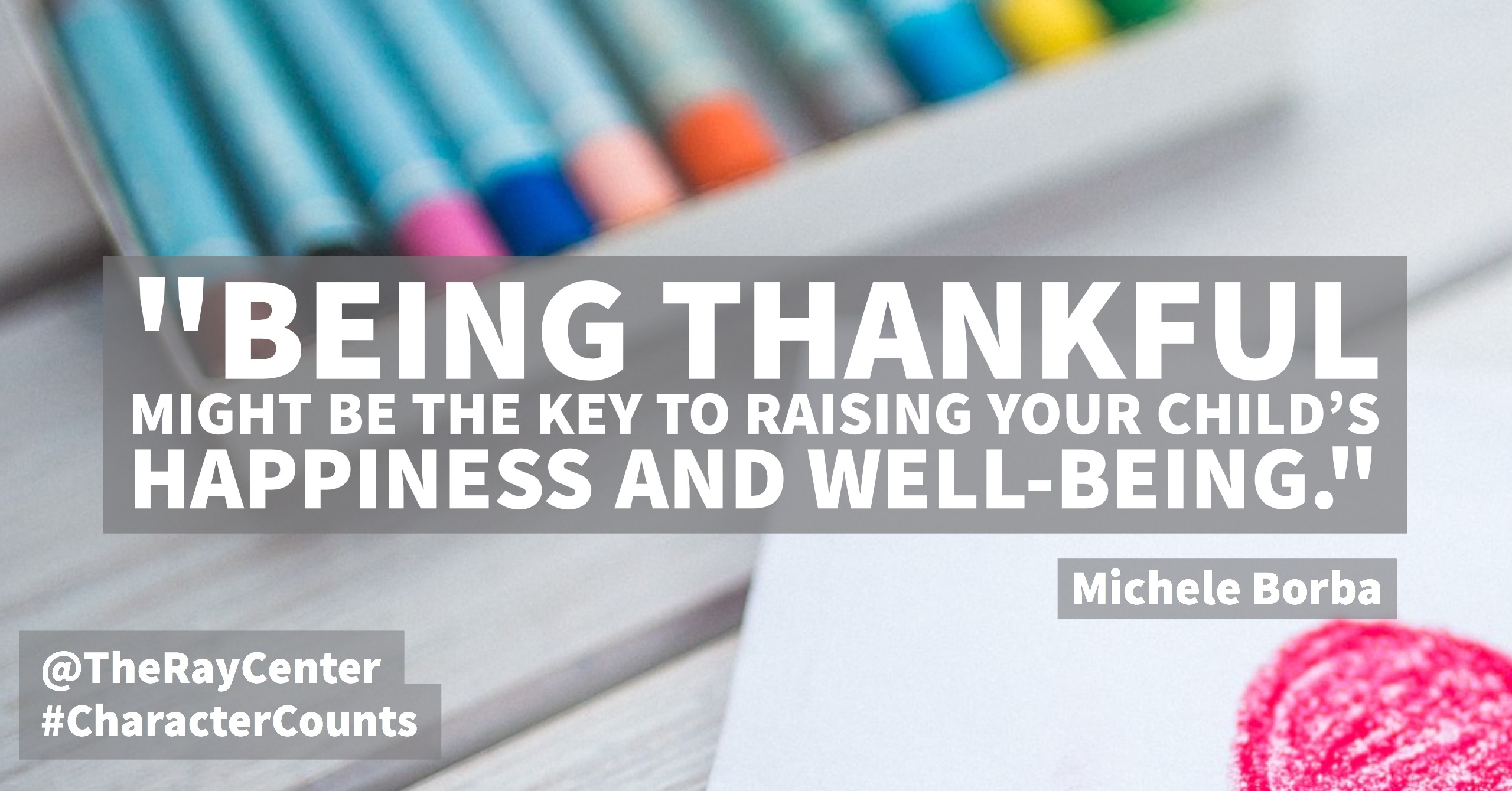
From our guest contributor, Michele Borba.
Did you know that writing a “thank you” note is a simple, proven way to boost your child’s gratitude? That’s what researchers from the University of California at Davis and Southern Methodist University found. But that’s not all: Researchers also discovered that being thankful might be the key to raising your child’s happiness and well-being.
For the past ten years two professors, Robert Emmons and Michael McCollugh, have examined date of several hundred people who were involved in their simple gratitude experiments.
One ten-week study asked a group to write down five things in a journal they were grateful for that happened in the last week for four days a week.
A second group listed ways they were better off than others as a way to appreciate their blessings. The psychologists then looked at the medical and psychological tests of each participant prior to the study, and then again ten weeks later. Those simple gratitude exercises made those participants, feel 24 percent happier.
But that’s not all: the students were also more optimistic about the future, felt better about their lives, slept better, felt healthier and less stressed, were less materialistic and more likely to help others. And those results were not hard to achieve. Best yet, you can help your child reap some of those results just by encouraging them to write thank yous.
While most of us agree that writing “thank you” cards is a habit of gratitude we should encourage, getting many kids to actually write them –without the whines and complaints — if often a problem. So here are a few fun (and a bit sneaky) tricks to getting your kids to write those notes for this year’s batch of holidays presents.
8 Tips to Get Kids Into the Habit of Writing Thank Yous
- Set expectations for gratitude
Be clear and upfront this year. Any present–regardless of the price or size–deserves a “thank you” card. If your kids hear those expectations now, they’ll be less likely to put up a battle later. Parents who raise grateful kids don’t do so by accident. - Keep reminding!
Keep in mind that kids may need constant reminders. “Did you remember to thank Jeff’s mom?” And don’t overlook the slips: “You can call to thank her when you get home. - Enforce the “Write then play” rule
Implement one simple family rule: “You must write the thank you note first, and then you may use the gift.” Believe me, that mandate speeds up the writing process. - Set age appropriate guidelines
A young child can dictate his comments and only needs to sign his name. School age kids should use this rule from The Etiquette and Leadership Institute at Athens, Georgia: “The total number of sentences in a thank you note should be half the child’s age.” So a ten-year-old should be expected to write a minimum of five complete sentences; a six-year-old should write just three sentences. - Turn on kids’ creative juices
Another way to get kids more involved in the “thank you” writing process is to ask them to come up with their own unique way of thanking Grandma. A few creative “thank you” card ideas for kids might include:- Making a video just for that person that expresses appreciation.
- Taking a photo of the child wearing or using the gift. The developed four-by-six inch print makes an instant postcard; the child just writes a brief note on the back and addresses and mails it. Tweens and teens can take a photo from their cell phone and send it to Grandma (along with a thoughtful message).
- Writing the thank you on a piece of card stock and then cut it into a few pieces like a jigsaw puzzle.
- Spelling out the thank you use M&M’s or alphabet cereal glued on a piece of cardboard.
- Picking a flower and press it flat for a few days between wax paper arranged inside a heavy book. Once the flower is pressed send it inside a heavy piece of folded paper with a note.
- Help imagine the emotion behind the gesture
A hard lesson for kids to learn is that they’re really thanking the person not for the gift but the thoughtfulness behind it. “Grandma thought a lot about what to give you this year.” “Mark went to five stores to try to find what would make you happiest.” Keep reinforcing the thought that went into the purchase. - Be the example
Remember, your kids are watching your example. So don’t forget to write thank you notes yourself! Have you written your thank yous? - Thank your kids
What about thanking your kids? Don’t overlook your kids’ daily thoughtful deeds. Just be sure to tell them what they did that you appreciate so that they are more likely to copy your example and send their own “appreciation messages” to others.
Click here to learn more about character education.


